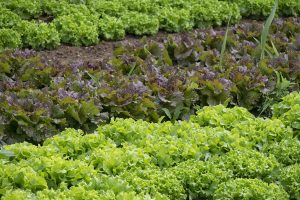
Succession Planting – Getting the Most from Your Garden

Disclaimer: This section contains affiliate links, which means I may earn a small commission when you purchase through links on my site at no additional cost to you.
What is Succession Planting?
You may have heard the term succession planting before, but don’t really know what it means or why it is important. Succession planting is a gardening technique that involves planting produce in stages throughout the growing season to ensure a continuous supply of fresh produce. By staggering the planting of different crops, gardeners can maximize their yields, extend their harvests, and make the most of limited growing space.
Why Use This Method?
There are several advantages to succession planting. First, it helps to ensure a steady supply of fresh produce throughout the growing season, rather than having a surplus of vegetables all at once followed by a long wait for the next crop. Second, by planting in stages, gardeners can avoid having a lot of waste if all the vegetables ripen at once and cannot be consumed or preserved quickly enough. You could of course share the excess with neighbors, friends and family! Finally, succession planting can help maximize the use of garden space by allowing different crops to be grown in the same space at different times.
Know What to Grow
To successfully implement succession planting, gardeners need to plan ahead and choose the right crops for their climate and growing conditions. If you are unsure of what growing zone you are in, check out this map. Some vegetables, such as beans, lettuce, and radishes, are well-suited to succession planting because they have short growing seasons and can be harvested multiple times. Other vegetables, such as tomatoes and peppers, take longer to mature and may not be suitable for succession planting in all climates.
When planning a succession planting schedule, it is important to consider the length of the growing season, the time it takes for each crop to mature, and the timing of the last frost in the spring and the first frost in the fall. Gardeners should also consider the specific needs of each crop, such as soil requirements and sunlight exposure.



Beans, lettuce and radishes grow quickly and are well-suited for succession planting
Succession Planting Methods
One popular method of succession planting is to plant cool-season crops such as peas and lettuce in the early spring, followed by warm-season crops such as tomatoes and peppers in the summer, and then fall crops such as broccoli and kale in the late summer or early fall. This allows for a diverse mix of crops throughout the growing season and ensures a steady supply of fresh produce.
Another approach is to plant the same crop in multiple stages, with a new batch planted every few weeks. This works well for fast-growing vegetables such as radishes and lettuce, which can be harvested in just a few weeks and then replanted. This is the method I prefer to use. Especially with lettuce.
Maximize Harvests
Overall, succession planting is a great way for gardeners to maximize their yields, extend their harvests, and make the most of limited space. With careful planning and attention to detail, anyone can implement this technique and enjoy a bountiful harvest all season long.
Happy Planting!
ABOUT AUTHOR

Rebecca
Hello, I am Rebecca! I am so glad you are here on this journey with me! Here, I am sharing my passions including gardening, cooking, baking, crafting, natural living and so much more! In addition to the content I share on my YouTube page, I also write a blog.
It took a long time for the things I am passionate about to awaken within me. Now that they have, I am eager to share them with others.
Among the many things I am passionate about, gardening is one of them. In addition to gardening, I also enjoy different areas of art, crafting, photography and home project DIY.

RECENT POSTS


weighted Hula Hoop Challenge


